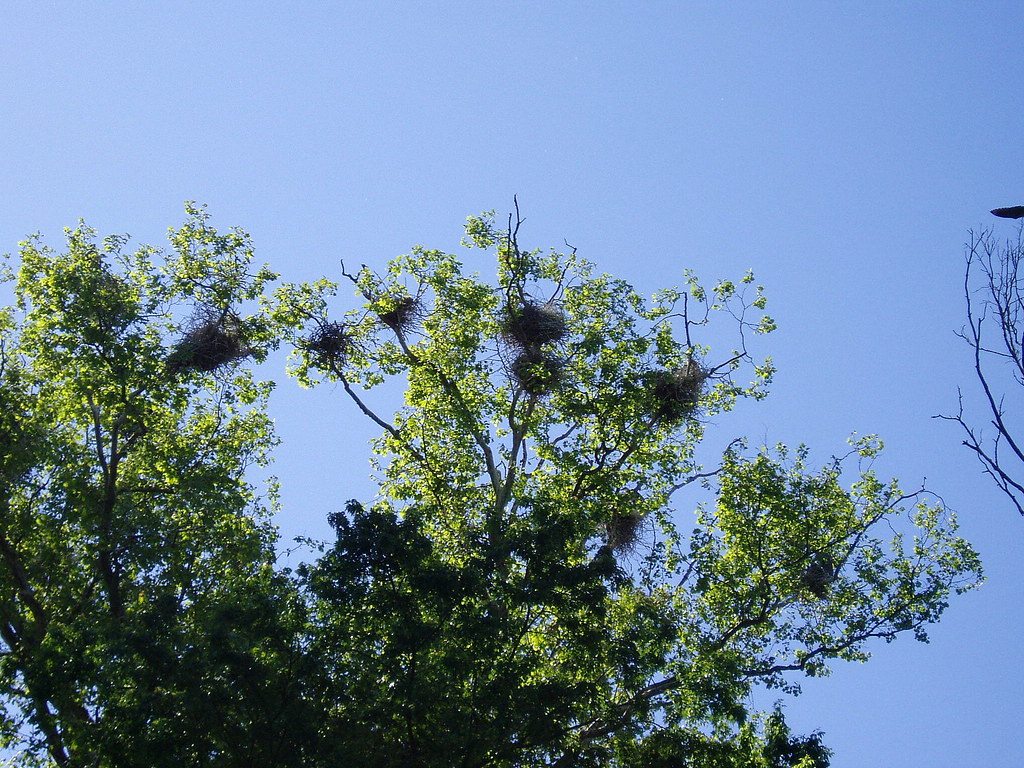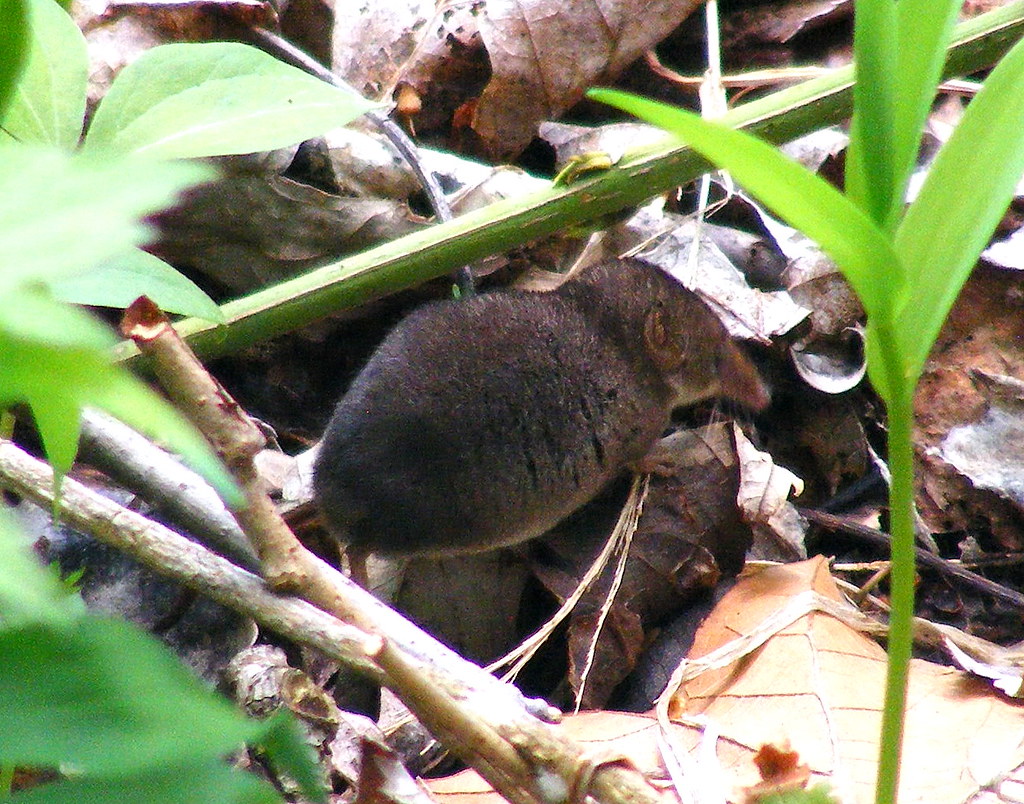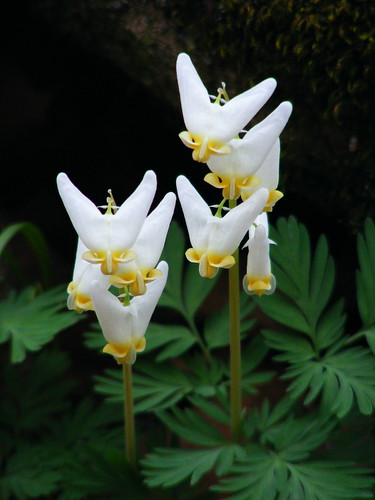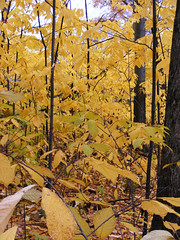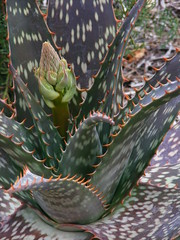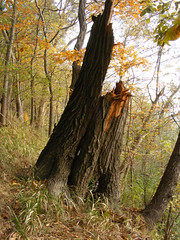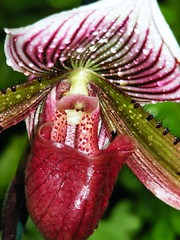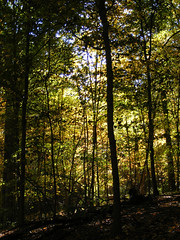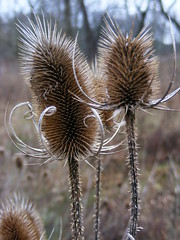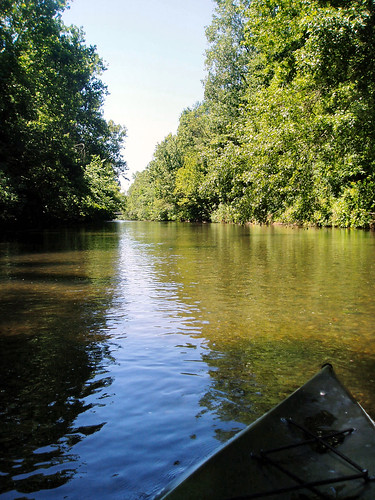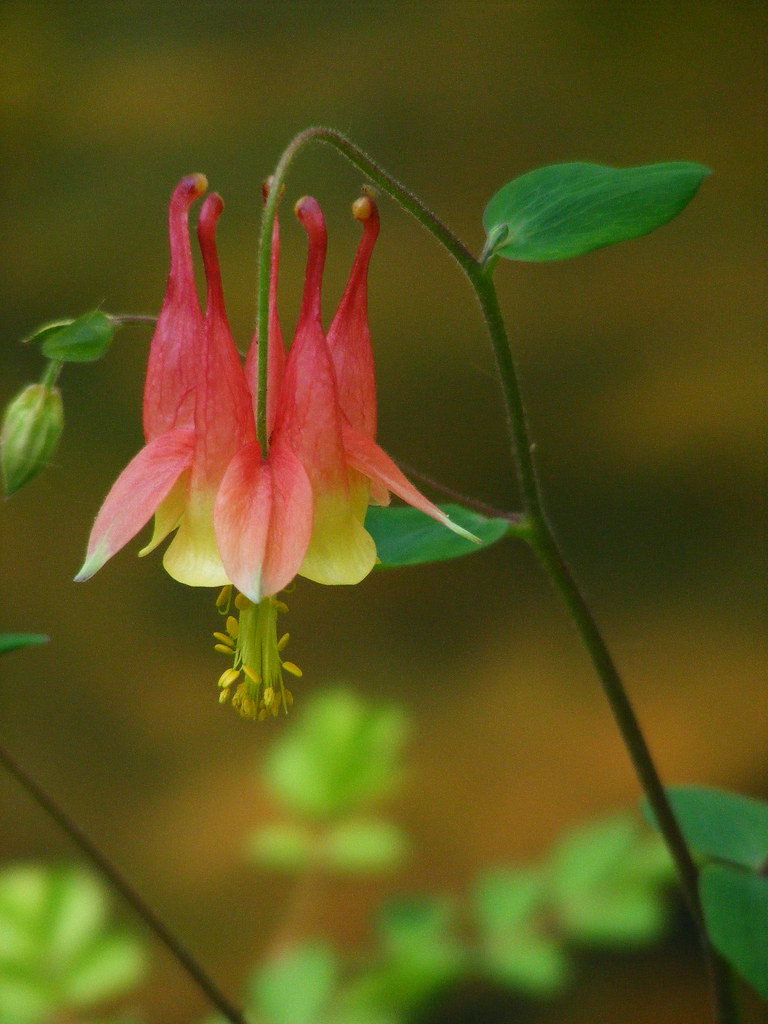
One of my favorite Ohio wildflowers blooms this time of year. The wild columbine prefers thin soils and can be found clinging to the sides of cliff faces and boulders in woodlands across Ohio. Their flowering coincides with the first arriving hummingbirds, which are well adapted to reach the nectar stored in the upper ends of the long spurs of the blossom.
The flower takes its name from
columba, from the Latin word for dove. Some early aficionado thought the flower's unique shape resembled a group of doves perched around a fountain. The genus of the flower also takes its name from a bird;
Aquilegia is Latin for "eagle-like" and refers to the resemblance of the flower to an eagle's talons.
In legend, the columbine is considered to be a symbol of foolishness, because the flower looks like the flounced hat of a court jester. It is considered to be bad luck to give a columbine to a woman for this reason. The wild columbine is also associated with a legend of the Virgin Mary. The fallen petals look like tiny slippers and it is said that columbine plants arose wherever Mary stepped on her way to visit her cousin Elizabeth, so sometimes columbine goes by the common name Our Lady's Shoes or the Virgin Mary's Shoes.
There are many domesticated cultivars of columbine, the flowers of most of which are upturned, but my favorite remains the lovely nodding flowers of the wild columbine. The fact that they grow in some of the prettiest spots in Ohio is probably no small factor in my preference.

